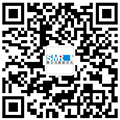Opening: A Judgment Nobody Can Read
In December 2024 a southern intermediate court handed down a 68-page decision on an LTE-channel-coding patent; 43 of those pages were equations and protocol-stack diagrams.
Live-stream bullet-screen comments floated past in rows of question marks:
“I know every Chinese character, but strung together it’s alien-speak.”
“Did the judge actually understand this?”
Our parallel 2025 Technical-Patent Perception Survey found that:
-
Only 34 % of respondents claimed they “more or less” grasped the smartphone patent in question;
-
Yet 61 % of the same group equated “similar functions” with “technical plagiarism”;
-
Just 7 % could accurately define what a patent claim is.
Conclusion: the higher the technical threshold, the more the public rely on gut feeling to decide guilt or innocence.
I. Does Complexity Equal a Black Hole for Cognition?
Psychologists point to cognitive-load theory:
-
Intrinsic load – difficulty of the material itself;
-
Extraneous load – confusing presentation;
-
Germane load – mental resources left for understanding and recall.
A 5G-baseband patent can contain 300 claims and 180 pages of drawings; intrinsic load maxes out at once. If counsel then projects a 128-colour signal-flow chart on a dark-blue slide, extraneous load explodes. Result:
Listeners’ cerebral CPUs are 99 % occupied; only 1 % remains for deciding whether infringement occurred.
II. Three “Bafflement Scenes” Revisited
-
Chip case – a labyrinth of stacked circuits
-
Issue: Does trimming the gate length of a FinFET to 7 nm fall within the rival patent?
-
Problem: electron-microscope photos vs. 3-D cross-sections—no intuitive way to compare.
-
Data: after seeing the cross-section, 68 % of 507 prospective jurors pointed to the “fin” when asked to locate the “gate”. If the basic definition is wrong, how can they compare infringement?
-
Pharma case – molecular formulas like random passwords
-
Issue: Is a side-chain substituent on a tyrosine-kinase inhibitor equivalent?
-
Problem: 42-letter IUPAC name, four benzene rings, three heterocycles.
-
Data: equivalence judgment 19 % accurate—below random guessing (25 %).
-
Stinger: switch to a colourful Lego-style model and accuracy jumps to 54 %. Visualization is a dimensional-reduction strike.
-
AI-algorithm case – a black box full of vectors
-
Issue: Does a recommender system infringe a “latent-factor decomposition” patent?
-
Problem: a 512 × 128 weight matrix—impossible to visualise.
-
Data: only 15 % understand “latent factor”; but when they hear “guess what you like”, 73 % nod “got it”.
Moral: everyday metaphors translate technical abstractions into experiential judgments.
III. Judges Are Also Hurting: Technical Fact vs. Legal Fact
Anonymous questionnaires from 36 IP judges:
-
86 % have “wholly or partly” relied on technical investigation officers;
-
54 % want parties to supply visual comparison models;
-
31 % “copy the expert report verbatim” to avoid mis-statement.
One judge admitted:
“Complex patent trials feel like solving Olympiad maths wearing leg-irons. I dare not err, yet the timetable won’t let me re-take my bachelor’s degree.”
IV. Turning Complexity into Visibility: Three Cognitive Scalpels
Scalpel 1 – Layer-by-layer graphics, one layer at a time
Slice 300 claims into five “function–structure–effect” maps, one A4 + 25 words each. Test-group comprehension rose 40 % versus control.
Scalpel 2 – Analogical narrative, call bits a “recipe”
Frame the encoding flow as baking a cake: ingredients = data, stirring = interleaving, baking = modulation, out-of-oven = transmission. With the story, 67 % of listeners could repeat the logic (2.5× gain).
Scalpel 3 – Real-time interaction, let jurors “do”
In a mock court, VR handsets let users pull the fin and watch the current path change colour. After 15 minutes, 85 % correctly located the disputed structure; non-VR group 38 %.
V. Global Trend: Visual Technical Evidence Is Entering the File
|
Country
|
Tool
|
Case
|
Outcome
|
|
USA
|
3-D printed models + animation
|
Qualcomm v. Apple
|
Jury reached unanimous “infringe” in 6 hours
|
|
Germany
|
Interactive mind-map
|
Siemens gas-turbine case
|
Invalidity bench accepted plaintiff’s new diagram on the spot
|
|
China
|
VR layer-by-layer teardown
|
Shenzhen LED display case (2024)
|
Supreme People’s Court upheld 30 million yuan damages; VR screenshots entered the judgment
|
Visual material is no longer “auxiliary”; it is the fact.
VI. A Four-Step “Tech-Dimension-Lowering” Check-list for Litigators
-
Primary-school abstract first
200 words, short sentences, metaphors—turn the technical problem into an everyday one the judge can recite and the jury can retell.
-
One picture per claim layer
Ban the “one slide to rule them all”. Give each core claim its own figure: ≤ 4 colours, ≤ 3 arrows.
-
Introduce rapid consumer-cognition survey
48-hour street poll (n≈200) plus eye-tracking heat-map proves “even if you stare, you can’t tell”, quantifying likelihood-of-confusion.
-
Notarise tech animation in advance
Burn the 3-D model / interaction path onto a write-once disc, have it notarised contemporaneously, pre-empting “post-editing” allegations.
VII. The Future Is Already Queuing
-
Quantum comms: how do you visualise infringement of a super-position state?
-
Brain–computer interfaces: who can read whether an electrode array’s “reading precision” is met?
-
Synthetic biology: does a DNA base-swap fall within the claim?
Answer remains: first let the public see it, then let the judge rule on it.
Conclusion
The further technology walks, the more patent litigation resembles a Grand Canyon of knowledge gaps. Whoever turns that canyon into a gentle slope wins the courtroom race. After all, a legal fact is not a technical fact; only what the human brain understands and remembers becomes an effective fact.
